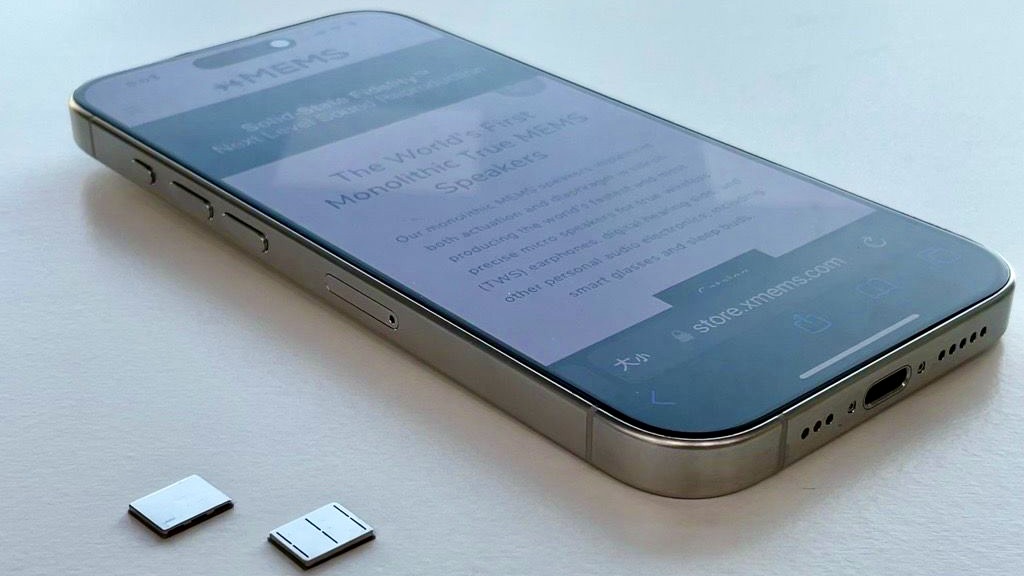Unique 'fan-on-a-chip' could prevent AI smartphones from overheating — with 1st devices launching in 2026
The "xMEMS XMC-2400 µCooling" chip aims to keep future smartphones from overheating as they become more powerful.

For the first time, scientists have packaged a miniscule silicon chip with a cooling system designed to "actively" keep smartphones cool — rather than relying on "passive" cooling and thermal throttling.
The "xMEMS XMC-2400 µCooling" chip is just 0.04 inches (1 millimeter) thick — slightly thicker than a credit card — and is designed to be fitted into ultramobile devices like smartphones and tablets.
Made in two configurations with vents either on the sides or on the top, the device can shift 2.4 cubic inches (39 cubic centimeters) of air per second while consuming minimal power and making no noise, representatives from xMEMS, a company specializing in chips for speakers, said in a statement. It also generates more "back pressure" than conventional fans, letting it be placed away from an ambient air source.
Unlike conventional fans, it uses a "piezoMEMS transducer" — a device that utilizes the piezoelectric effect, in which a material changes volume (or moves) when a current is applied to it. This comprises tiny silicon structures that oscillate at ultrasonic frequencies to generate air pulses that create airflow.
There is a rising demand for better cooling as manufacturers integrate artificial intelligence (AI) into new devices. AI increases the demand for computing resources — including more processor cores and onboard memory. In theory, the more powerful future devices are, the hotter they will run.
Related: Ultrasonic earbuds with 'advanced noise-cancellation' could launch as soon as 2025
Unlike laptops, however, smartphones don't use active cooling systems like fans and instead rely on passive cooling — meaning the heat generated by components dissipates through features like a heat sink — a component designed to absorb any heat generated. For example, the Samsung Galaxy S24 uses a "vapor chamber" while the iPhone 15 Pro uses a large graphite heat spreader to absorb heat.
Get the world’s most fascinating discoveries delivered straight to your inbox.
As smartphones have grown more powerful and capable of intensive tasks like 3D gaming, video editing and tapping into 5G networks, while being designed to be ever slimmer, they have become more prone to thermal "throttling." This is when CPUs or GPUs limit power once they reach a thermal limit. The process is now so commonplace in modern-day smartphones there are even benchmarks measuring how well a device performs when being throttled.
The XMC-2400 chip, however, is an "active" solution that functions like fans in computers but on a much smaller scale, and it can be stacked on top of existing components in a smartphone.
The device functions differently depending on whether it has vents on the top or on the side. The side-vented chip draws in cold air from eight vents below which strikes the heat captured by the passive cooling system, such as a heat spreader, and then pushes the warm air out through side vents. The top-vented XMC-2400 chip, meanwhile, draws in air through slits on the lid to blow directly onto the heat-generating components to cool them down.
This reduces the throttling of core components, lowers the surface temperature of smartphones and improves app performance, according to xMEMs representatives.
"Our revolutionary µCooling 'fan-on-a-chip' design comes at a critical time in mobile computing," Joseph Jiang, xMEMS CEO and co-founder, said in the statement. "Thermal management in ultramobile devices, which are beginning to run even more processor-intensive AI applications, is a massive challenge for manufacturers and consumers. Until XMC-2400, there's been no active-cooling solution because the devices are so small and thin."
Alongside smartphones, the chip-based cooling system can be used in ultrathin laptops, VR headsets, solid-state drives and wireless chargers. The company plans to sample its XMC-2400 chip to smartphone manufacturers at the beginning of 2025. The device will be in smartphones by 2026.

Keumars is the technology editor at Live Science. He has written for a variety of publications including ITPro, The Week Digital, ComputerActive, The Independent, The Observer, Metro and TechRadar Pro. He has worked as a technology journalist for more than five years, having previously held the role of features editor with ITPro. He is an NCTJ-qualified journalist and has a degree in biomedical sciences from Queen Mary, University of London. He's also registered as a foundational chartered manager with the Chartered Management Institute (CMI), having qualified as a Level 3 Team leader with distinction in 2023.


